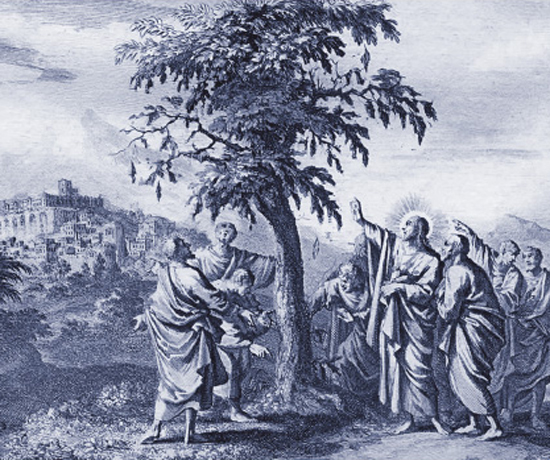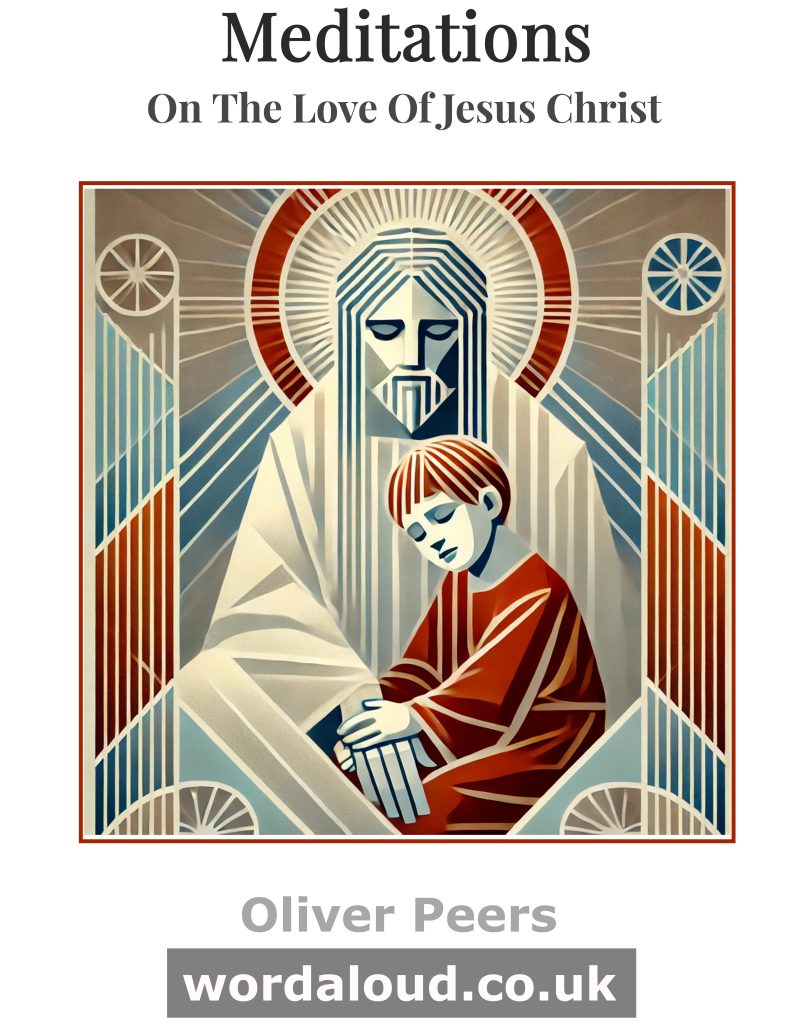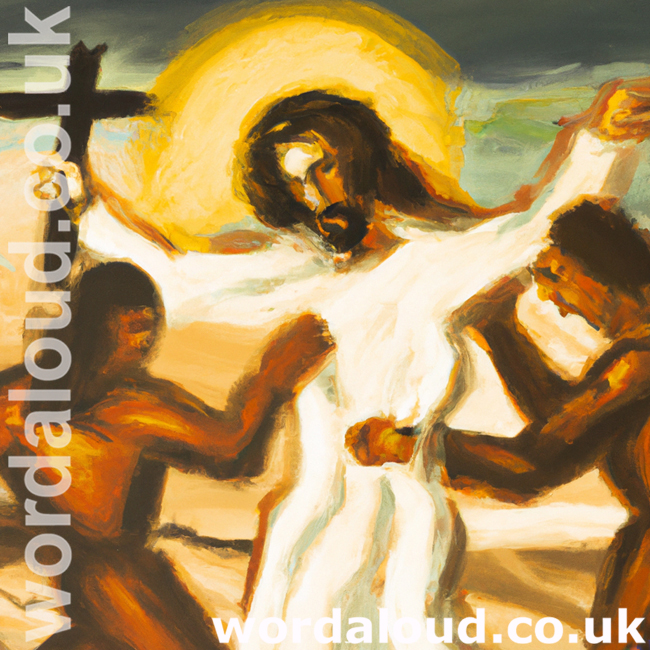Christian Art | The Lesson Of The Fig Tree | Parables Of The Kingdom
Luke 21: 29-33 – Week 34 Ordinary Time, Friday (Audio Bible KJV, Spoken Word)
29 And he spake to them a parable; Behold the fig tree, and all the trees;
30 When they now shoot forth, ye see and know of your own selves that summer is now nigh at hand.
31 So likewise ye, when ye see these things come to pass, know ye that the kingdom of God is nigh at hand.
32 Verily I say unto you, This generation shall not pass away, till all be fulfilled.
33 Heaven and earth shall pass away: but my words shall not pass away.
Just as Jesus’ listeners know how to interpret signs in nature, the trees beginning to bud and shoot new leaves as they come to life in spring, so Jesus tells them that, when they see and experience the upheavals described by Jesus in our Gospel verses of the past few days, they will know that the Kingdom of God is near.
Jesus has spoken of the destruction of Jerusalem, the city which is the heart and the centre of most of his listeners’ world, and the home of many, and he has spoken of global and cosmic turmoil accompanying the coming of the Son of man, the power and the glory of God breaking in upon the world as the world seems to fall apart.
The sense of the Kingdom of God and the second coming can be confusing. The world did not end shortly after Christ’s crucifixion – and the Gospels as a whole do not suggest Jesus intended us to think that it would. We anticipate a final and definitive coming of the Kingdom – and this is a supernatural reality, the heavenly home we long for, to be attained at the end of our earthly, mortal lives, as at the end of all time – and we call on Jesus to come to us now, that his Kingdom may be a living reality in this world, that we may be one with Christ and Christ within us. (See previous days.)
Pope Paul VI writes, in The Creed of the People of God (1968):
‘We confess that the Kingdom of God begun here below in the Church of Christ is not of this world whose form is passing, and that its proper growth cannot be confounded with the progress of civilization, of science or of human technology, but that it consists in an ever more profound knowledge of the unfathomable riches of Christ, an ever stronger hope in eternal blessings, an ever more ardent response to the love of God, and an ever more generous bestowal of grace and holiness among men. But it is this same love which induces the Church to concern herself constantly about the true temporal welfare of men. Without ceasing to recall to her children that they have not here a lasting dwelling, she also urges them to contribute, each according to his vocation and his means, to the welfare of their earthly city, to promote justice, peace and brotherhood among men, to give their aid freely to their brothers, especially to the poorest and most unfortunate. The deep solicitude of the Church, the Spouse of Christ, for the needs of men, for their joys and hopes, their griefs and efforts, is therefore nothing other than her great desire to be present to them, in order to illuminate them with the light of Christ and to gather them all in Him, their only Saviour. This solicitude can never mean that the Church conform herself to the things of this world, or that she lessen the ardour of her expectation of her Lord and of the eternal Kingdom.’
Concluding Prayer
Lord Jesus Christ,
who on the cross called the penitent thief into your kingdom,
in faith and trust and confessing our sins
we implore your mercy
that after our death
you will lead us rejoicing through the gates of paradise.
Who live and reign for ever and ever.
![]()

Audio Bible KJV | Endnotes
The Lesson Of The Fig Tree
The parable of the fig tree is a call to awareness and preparation for the return of Christ, the parousia or second coming, and the establishment of Jesus’ kingdom. It is a reminder that, just as the coming of summer is signaled by the budding of the trees, the signs of Christ’s return are evident to those who are watching and paying attention.
The parable of the fig tree has been interpreted in different ways by Christians. Some believe that the fig tree symbolizes Israel, while others believe it represents humanity as a whole. Regardless of the interpretation, the lesson of the fig tree is clear: we must be alert and ready for the return of Christ.
In his book, The Gospel According To Luke, theologian Leon Morris suggests that the parable of the fig tree is meant to encourage Christians to ‘live in the light of the coming Kingdom’. He notes that the word used for ‘know’ in the passage is ginosko, which means ‘to perceive, to come to know, to understand’. Morris explains that this word implies more than simply being aware of something; it means to know something deeply and intimately. Therefore, when Jesus says ‘when ye see these things come to pass, know ye that the kingdom of God is nigh at hand’, Jesus is calling Christians to a deeper level of understanding and awareness.
Catholic theologian and scripture scholar Scott Hahn has written on the topic of the parable of the fig tree. He suggests that the fig tree represents Israel and that the parable is a warning to the Jewish people that they must repent and turn to Christ in order to be saved. He also notes that the fig tree is often associated with the Temple, and therefore, the parable may also be a warning that the Temple will be destroyed if the people do not repent.
Protestant theologian John MacArthur has a different interpretation of the parable. He suggests that the fig tree represents all of humanity, and the parable is a warning that the time of judgment is near. He notes that the phrase ‘this generation shall not pass away’ is often interpreted as referring to the generation alive at the time of Christ’s crucifixion. MacArthur argues that this interpretation is incorrect, and that ‘this generation’ actually refers to the generation that sees the signs of Christ’s return.
The parable of the fig tree is a call to readiness and preparation. Christians are to be aware of the signs of Christ’s return and be ready for his coming. As the apostle Paul wrote in 1 Thessalonians 5:2-6: ‘For yourselves know perfectly that the day of the Lord so cometh as a thief in the night. For when they shall say, Peace and safety; then sudden destruction cometh upon them, as travail upon a woman with child; and they shall not escape. But ye, brethren, are not in darkness, that that day should overtake you as a thief. Ye are all the children of light, and the children of the day: we are not of the night, nor of darkness. Therefore let us not be asleep, as do others; but let us watch and be sober.’
The lesson of the fig tree is not just a warning of the impending return of Christ, but also a call to action. As Christians, we must be actively preparing ourselves for the coming of the Kingdom of God. This means living our lives in accordance with the teachings of Christ, spreading the Gospel to others, and striving to build up the Kingdom of God on earth. As Jesus says in Matthew 6:33: ‘But seek ye first the kingdom of God, and his righteousness; and all these things shall be added unto you.’
Many Christians have used the lesson of the fig tree to call their followers to action. In the 4th century, Saint John Chrysostom preached that Christians must be ‘vigilant and wakeful, keeping a lookout for the day of the Lord’. In the 16th century, Martin Luther emphasized the importance of faith and good works in preparing for the return of Christ. He wrote: ‘Faith must be exercised in doing good works and in preparing for the day of Christ.’
Today, religious leaders continue to emphasize the importance of the lesson of the fig tree. Pope Francis has called on Christians to be ‘sentinels of the dawn’ and to actively prepare for the coming of the kingdom of God. Pope Francis writes: ‘We are called to be watchful and vigilant, to avoid being caught off guard by the allure of worldly temptations.’








